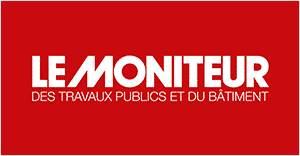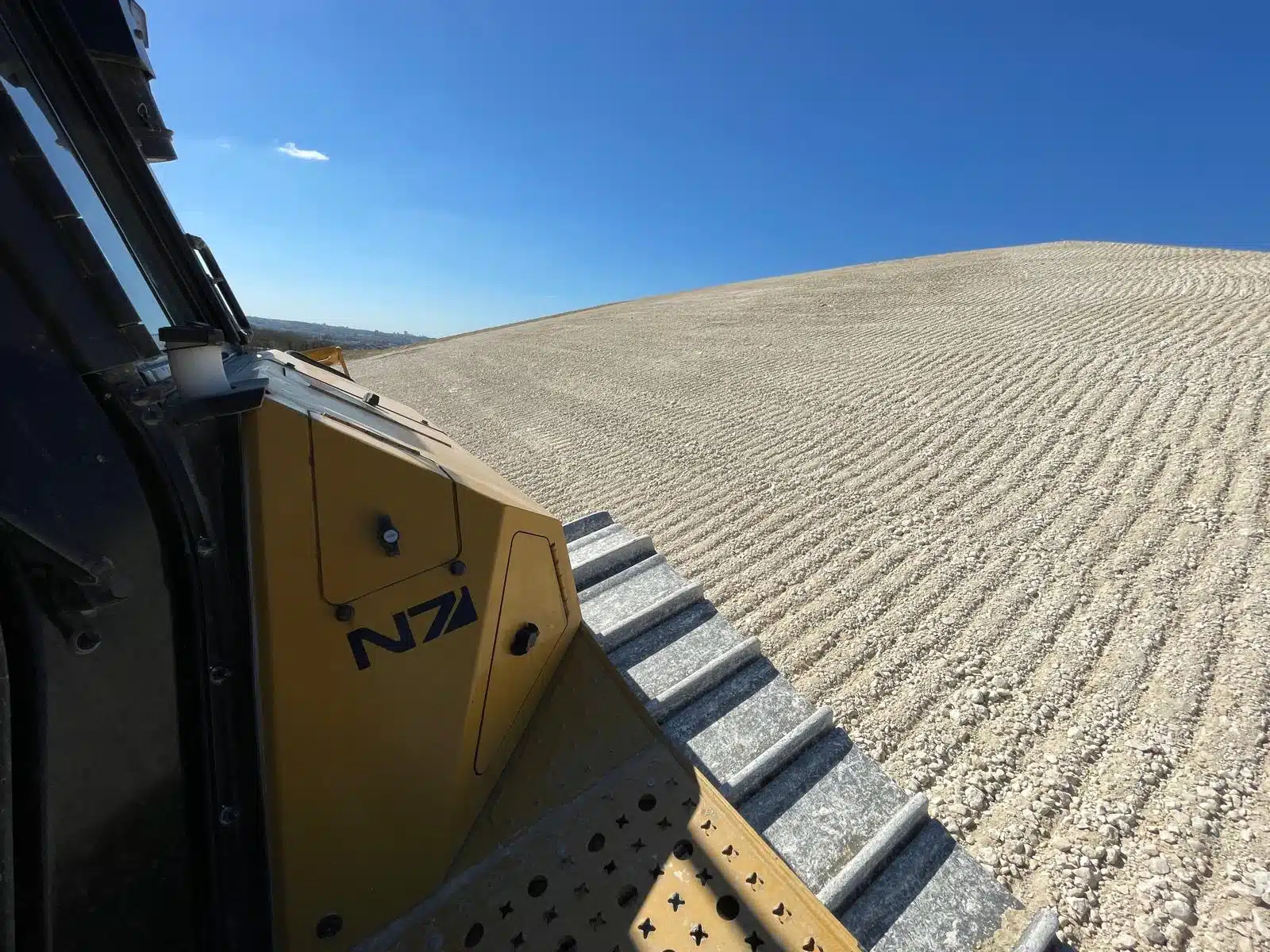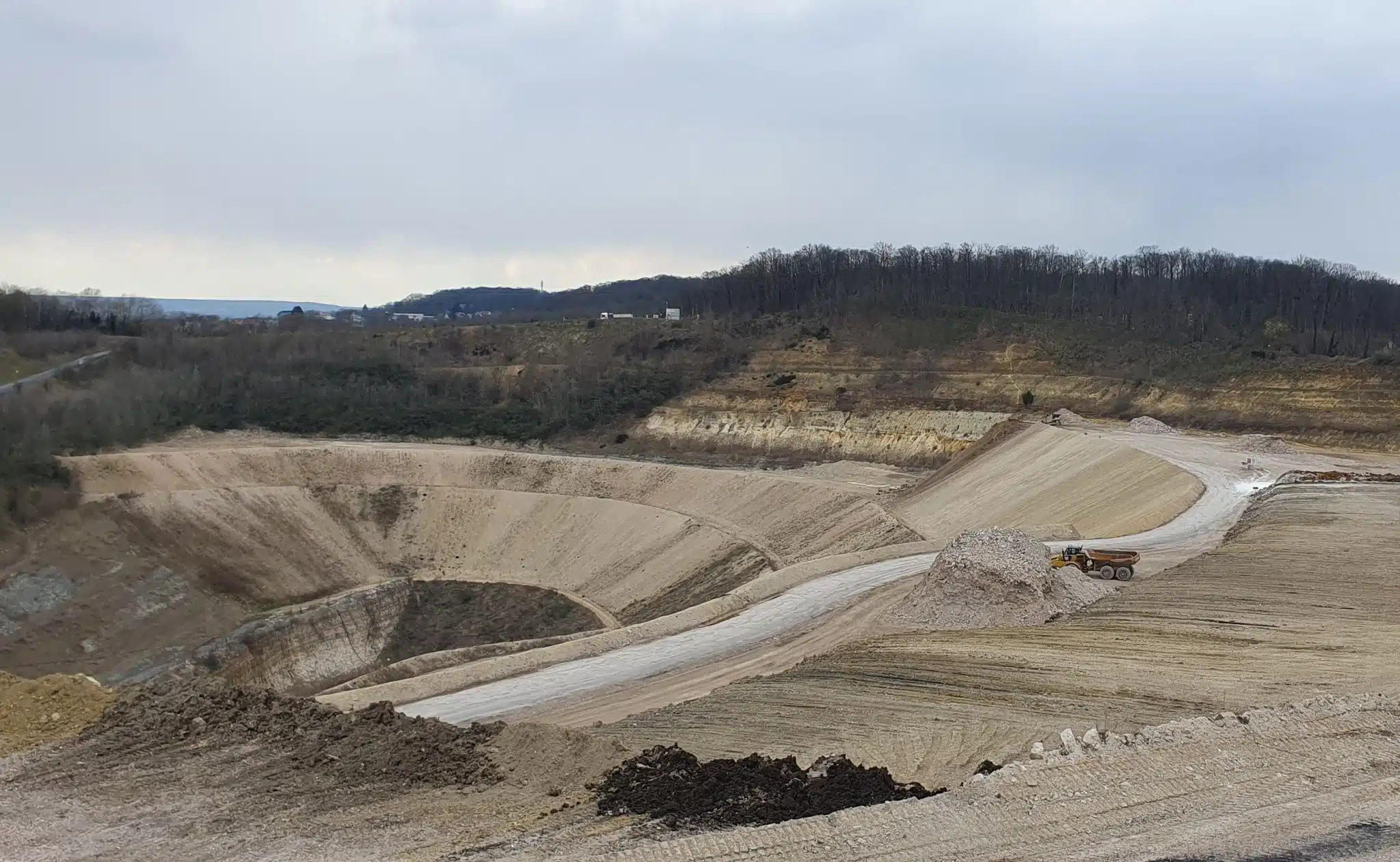In the June 2020 issue of Le Moniteur, Laurent MIGUET devotes a special report to “climate change, disrupting the way cities are built”. The article “Un technosol fertile sur le parvis du château de Vincennes” is the 3rd step in this dossier.
An 11,200 m² meadow will grow on the technosol produced by ECT, in place of the old parking lots.
“The city’s air conditioning depends on fertilizing its technosols. The greening of the esplanade Saint-Louis, in front of the Château de Vincennes in Paris, supports this rule of urban metabolism. To transform a parking lot into a meadow, the circular economy approach combines technical, ecological and economic advantages.
Demineralization, revegetation, infiltration: the metamorphosis of the Esplanade Saint- Louis, in front of the Château de Vincennes, activates these three major levers for mitigating urban heat peaks. Delayed by the Covid 19 crisis, the finishing touches to the shaping of the new fertile platform will have to wait until the end of the year, as will the sowing of this future recreational and event space.
Gentle irrigation
Working in close collaboration with the Architecte des Bâtiments de France, the Ministry of Culture and the town of Vincennes, the City of Paris is transforming the building site into a meadow 11,200 m2 previously dedicated to car parking. Research and Development Director at Enviro Conseil et Travaux (ECT), Benjamin Tilliet picks up a handful of the levelled, still bare earth that has replaced the asphalt: “With a maximum grain size of 20 mm, the gravel doesn’t disturb gardeners, the clay slows infiltration and the organic residues provide the nutrients needed by vegetation,” he explains.
Rare earths
The worksite is clearing a hurdle often encountered in the greening of Greater Paris: where to find fertile substrate? As envisaged by Lachaux Paysage, the company in charge of the green spaces package, importing topsoil from regions bordering the Paris region came up against a double impasse: ecological aberration and prohibitive costs. Using truckloads, this option would not even have met the load-bearing and drainage requirements set out in the specifications.
“We offer a solution that’s at least half the price,” asserts Jonathan Bryden, director of new services and markets at ECT, the Paris region’s leading inert waste disposal company, and subcontractor to Lachaux Paysage at Esplanade Saint-Louis.
With 2,800 m3 to be spread over a thickness of 26 to 27 cm, the project represents the company’s first large-scale application of the fertile substrates developed under the leadership of Benjamin Tilliet, as part of ECT’s Urbafertil project.



